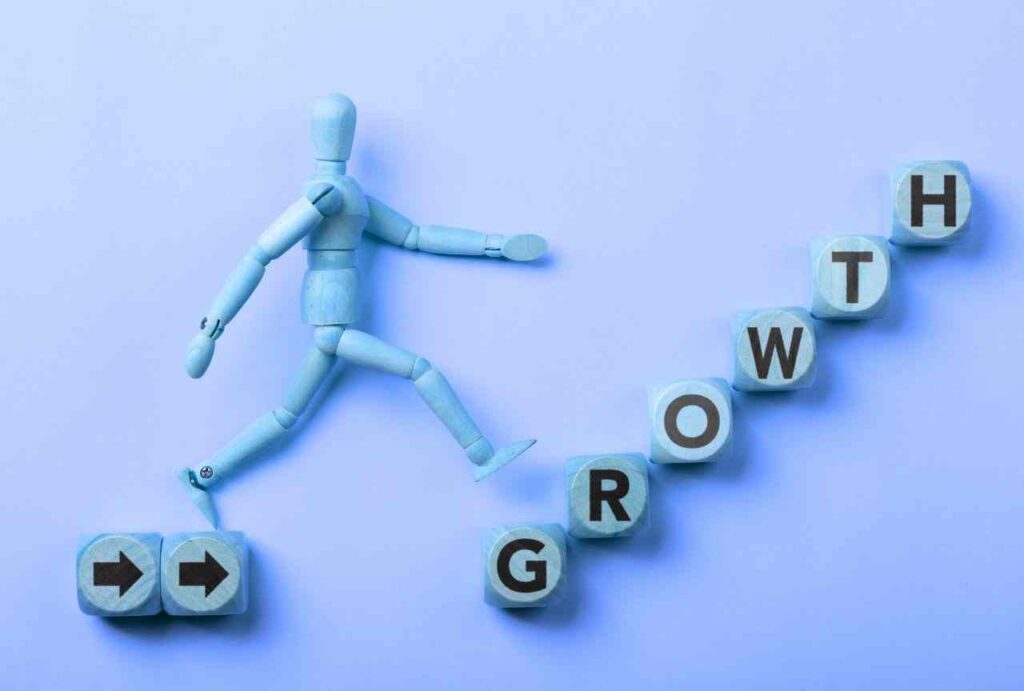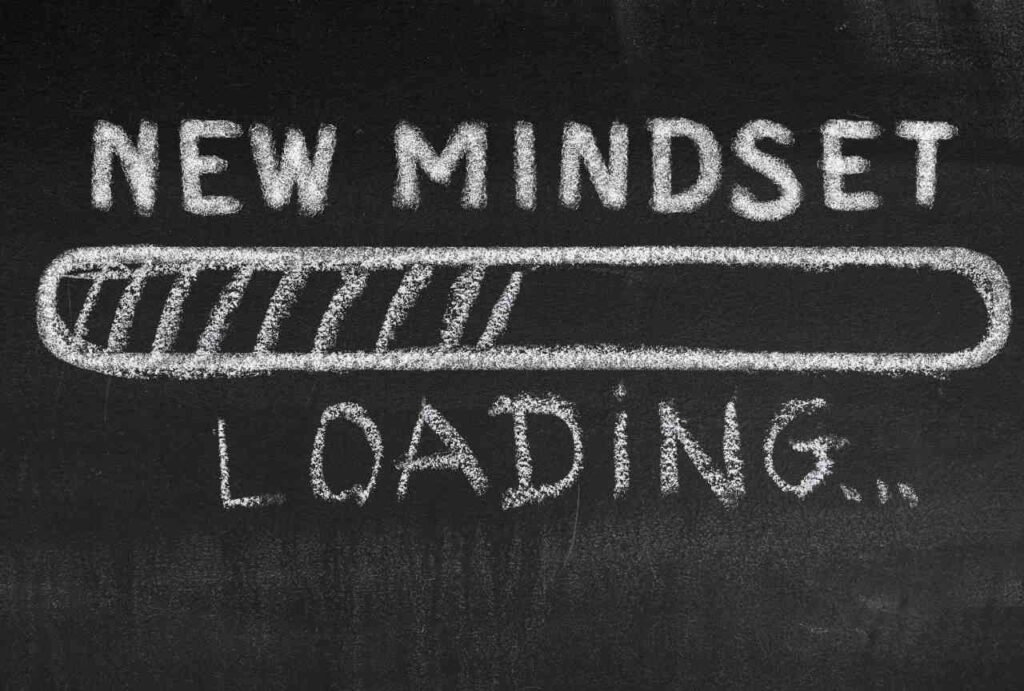A strong growth mindset at work is becoming one of the most valuable career assets. Companies expect employees to adapt to new tools, expectations, and new challenges with confidence, curiosity, and consistent improvement. Professionals who develop a growth mindset progress faster, learn new skills with less stress, and handle change with greater stability.
This mindset is not about constant positivity, it is about the willingness to learn, adjust, and strengthen performance without feeling limited by current abilities. Many struggle with growth not because they lack talent, but because they rely on fixed routines, avoid skill development, or fear making mistakes.
Building this mindset at work requires clear strategies, consistent habits, and awareness of the mental patterns that hold people back. This article outlines practical steps, daily behaviors, and proven methods that help professionals apply a growth mindset in a realistic and sustainable way.
I. The Core Principles of a Growth Mindset at Work
A strong growth mindset at work is built on specific principles that shape how professionals learn, respond to challenges, and strengthen their performance. These principles are practical and can be developed through consistent effort.
1. Openness to Learning
Openness to learning is the foundation of skill development in any role. Employees with a growth mindset at work stay curious about new methods, better tools, and updated knowledge that support improvement. Instead of relying on past success, they seek information that helps them move forward. This attitude expands opportunities, increases adaptability, and prepares professionals for new responsibilities. The more consistently someone learns, the faster they can adjust to workplace changes and deliver higher-quality results.

Also Read: Highly Effective Growth Mindset Activities for Kids, Students, and Adults
2. Ownership and Accountability
Ownership is a core behavior that strengthens credibility at work. Professionals with a growth mindset take responsibility for their actions, decisions, and outcomes without shifting blame. This creates clarity, supports improvement, and builds trust with colleagues and leaders. Accountability also encourages continuous growth because it allows individuals to analyze what worked, what did not, and what needs adjustment. When employees rely on accountability as a daily habit, they progress with far more stability and confidence.
3. Resilience During Change and Feedback
Growth requires resilience, especially when facing change, challenges, or feedback. Employees with a growth mindset at work view feedback as information that strengthens their skills, not as a personal judgment. They listen carefully, evaluate the message, and apply improvements without taking the process emotionally. This reduces stress and increases the ability to handle challenging projects, shifting priorities, or new tasks. Resilience also helps maintain productivity even during uncertain periods.
4. Process Over Perfection
Focusing on progress is more effective than seeking perfection. Pursuing flawless outcomes often leads to hesitation, overthinking, and unnecessary pressure. A growth mindset at work emphasizes skill development, consistency, and improvement-based habits. By valuing progress, employees move projects forward faster and with higher accuracy. This principle supports long-term performance because it encourages continuous learning instead of rigid, perfection-driven standards.

Also Read: How Can Short Term Goals Best Lead Towards Accomplishing Long Term Career Goals
II. The Biggest Reasons Employees Struggle to Build a Growth Mindset at Work
Understanding the barriers to a growth mindset at work is essential. Many want to improve, but internal patterns and workplace pressures slow down their progress. Addressing these challenges creates a clear path for personal and career growth.
1. Fear of Making Mistakes
Fear of mistakes is one of the main obstacles to developing a growth mindset at work. Many employees worry about judgment, consequences, or the possibility of losing credibility. This leads to avoidance of new tasks, reluctance to ask questions, and limited skill development. Reducing this fear requires a shift in perspective: mistakes are part of learning and data for improvement. Once employees separate personal value from performance outcomes, they gain more confidence in trying new approaches.
2. Negative Internal Dialogue
Internal dialogue strongly influences work quality, confidence, and willingness to grow. When employees rely on negative self-talk, they doubt their abilities, underestimate their progress, and hesitate to take on new challenges. This mindset blocks learning and reduces motivation. Strengthening inner dialogue by using supportive, constructive language leads to clearer thinking, higher productivity, and stronger progress. A positive internal narrative helps employees act on opportunities instead of avoiding them.
3. Overfocus on Output Instead of Skills
Many professionals evaluate their performance only through results. While results matter, focusing exclusively on output creates pressure and discourages learning. A growth mindset at work focuses on the skills and processes that lead to better output over time. When employees evaluate how they approach tasks, how they solve problems, and which skills require improvement, they make faster progress. Shifting from outcome-based thinking to skill-based thinking builds long-term performance and reduces stress.
4. Burnout and Lack of Motivation
Burnout reduces energy, weakens focus, and limits the ability to learn. When employees are overwhelmed, they operate in survival mode and have little capacity for improvement. This makes it difficult to apply a growth mindset at work, even with good intentions. Addressing burnout through rest, clarity, and balanced workloads allows individuals to regain mental bandwidth for development. Motivation increases when employees feel stable, supported, and capable of learning without pressure.

III. How to Develop a Growth Mindset at Work: Practical Steps That Create Real Change
A strong growth mindset at work is built through consistent habits, not broad ideas. The following steps provide structure, clarity, and specific actions that you can apply immediately.
1. Build a Weekly Learning System
Skill development becomes easier when it is planned and measurable. A weekly learning system gives employees a simple structure to follow.
How to apply it:
- Set one skill improvement goal each week related to your role.
Example: “Improve Excel efficiency by learning three new formulas this week.” - Dedicate 10–15 minutes each day to learning.
This can include tutorials, short articles, or reviewing internal team processes. - Track progress using a simple checklist.
Why it works:
It reduces overwhelm, increases consistency, and helps employees build momentum without large time commitments.
2. Shift From Performance Goals to Skill-Based Goals
Performance goals focus on results. Skill-based goals focus on abilities that create results. Skill goals reduce pressure and strengthen long-term performance.
Example transitions:
- Instead of: Increase monthly sales by 15%.
Use: Improve client communication by practicing three new closing techniques this month. - Instead of: Finish all tasks before deadlines.
Use: Strengthen task prioritization by using a daily planning method.
Why it works:
Skill improvement leads naturally to better performance without creating unnecessary stress.
3. Replace Limiting Statements With Solution-Oriented Language
Language shapes action. Changing the wording of your internal and external communication supports a stronger growth mindset at work.
Examples of effective shifts:
- “I don’t know how to do this” → “I can learn the steps to do this.”
- “This task is too complicated” → “I can break this down into smaller actions.”
- “I always struggle with this” → “I can get better by improving one part at a time.”
Why it works:
This method removes emotional weight and supports clearer decision-making.

4. Ask for Feedback the Right Way
Feedback strengthens performance, but many employees avoid asking for it. A structured request removes uncertainty and makes feedback more useful.
Use this simple formula:
Ask → Clarify → Apply → Follow Up
Example:
- Ask: “Could you point out one area I can improve in my email communication?”
- Clarify: “Do you mean tone, structure, or clarity?”
- Apply: Make the recommended adjustments.
- Follow up: “I applied the changes you suggested. Is this aligned with what you had in mind?”
Why it works:
It creates a clear improvement path and shows willingness to grow.
5. Practice Daily Reflection
Short daily reflection improves clarity, confidence, and decision-making. It helps employees evaluate what worked and what needs adjustment.
Three effective daily questions:
- What skill or action improved my performance today?
- What slowed me down and why?
- What can I adjust tomorrow?
Example:
If a meeting took longer than expected, the insight might be “I need shorter points and clearer preparation,” which leads to better performance the next day.
6. Use Stretch Tasks to Build Competence Faster
Stretch tasks expand capability without requiring large-scale responsibility changes. They help employees strengthen skills through controlled challenges.
Examples of stretch tasks:
- Leading a small portion of a project meeting
- Handling one part of a new workflow
- Training a colleague on a tool you use well
- Preparing a short report for team review
Why it works:
It exposes employees to skill-building opportunities while keeping workload manageable.
7. Build Performance Routines Instead of Relying on Motivation
Motivation fluctuates. Routines create stability. When employees develop structured work habits, growth becomes automatic.
Examples of productive routines:
- A morning 10-minute review of priority tasks
- A consistent system for planning deadlines
- A short end-of-day progress check
- Weekly skill review sessions
Why it works:
Routines remove decision fatigue, increase consistency, and support long-term improvement.

IV. Science-Backed Behaviors That Strengthen a Growth Mindset at Work
Scientific findings in psychology and behavioral science support specific habits that enhance learning, resilience, and adaptability. Applying these behaviors helps employees strengthen a sustainable growth mindset at work.
1. Neuroplasticity and Skill Improvement
Neuroscience shows that repeated practice strengthens neural connections. This means any professional skill can improve with consistent effort.
Workplace application:
- Repeating the same task with slight improvements each time
- Reviewing performance after each major task and adjusting one behavior
- Practicing complex skills in short, focused sessions
Example:
An employee who practices structured note-taking in meetings daily becomes faster and more accurate within weeks because the brain adapts to repeated patterns.
2. Rewarding Effort Creates Higher Motivation
The brain releases motivation-enhancing chemicals when effort is acknowledged, not only when success is achieved. This reinforces learning and increases persistence.
How to apply it:
- Record one effort-based win at the end of each workday.
- Track progress by noting small improvements, such as clearer communication or better task organization.
- Share progress with your manager during check-ins.
Example:
A customer service professional noting improved tone and clarity each week develops stronger communication habits because the focus is on effort-based progress.
3. Importance of Self-Evaluation
Research shows that thoughtful self-evaluation boosts accuracy in decision-making and strengthens long-term performance. It helps employees understand their strengths and areas that require development.
How to apply it:
- Conduct a weekly evaluation using a simple rating system (1 to 5) for skills such as communication, organization, or problem-solving.
- Identify one improvement and one strength to maintain.
- Build a monthly review to track patterns and progress.
Example:
If an employee consistently rates task prioritization as low, they can focus on improving planning routines the following month.
4. Using Small, Consistent Improvements
Small improvements compound over time and create major skill growth. This approach is supported by behavioral research showing that minor adjustments are more sustainable than sudden large changes.
How to apply it:
- Choose one small improvement each week instead of attempting a full system overhaul.
- Add one new productivity technique at a time.
- Improve one part of a repeated task, such as faster reporting or clearer email formatting.
Example:
An analyst who improves one section of their weekly report each month gradually develops high-level reporting skills without burnout.
V. Real Workplace Scenarios You Can Transform With a Growth Mindset
Applying a growth mindset at work becomes easier when you understand how common situations can shift through improvement-focused thinking and action. These cases demonstrate practical adjustments that support stronger performance and stability.
1. Receiving Critical Feedback
When feedback feels uncomfortable, a growth-oriented approach focuses on identifying one skill to strengthen instead of interpreting the message personally. This method reduces pressure, clarifies next steps, and helps you convert feedback into targeted improvement.
2. Handling a Missed Deadline
Instead of focusing on the setback, a growth mindset encourages reviewing the factors that caused the delay. By adjusting planning routines, communication, or preparation, future deadlines become more manageable and predictable.
3. Facing a New Skill Requirement
Work environments change quickly, and new tools or responsibilities can create uncertainty. A growth-driven response is to break the skill into smaller learning segments and create a short weekly improvement plan. This supports better confidence and faster adoption.
4. Working With a Difficult Colleague
Interpersonal challenges often slow progress. A growth mindset prioritizes clarity, structured communication, and focusing on behavior rather than assumptions. This shifts the interaction from frustration to problem-solving and improves collaboration.
5. Experiencing a Promotion Rejection
A rejection often leads to discouragement, but a growth-oriented approach looks at the skills that need strengthening for the next opportunity or looking for something better elsewhere. This helps create a realistic development plan that increases readiness for future advancement.
Adopting a growth mindset at work transforms how you approach challenges, skill development, and career growth. It shifts focus from proving ability to expanding it, making each task an opportunity to improve. Professionals who consistently apply growth-driven habits gain clarity, adaptability, and confidence, positioning themselves for meaningful progress and long-term success. Growth is not a one-time effort—it is an active, practical practice that strengthens your performance and influence every day.



